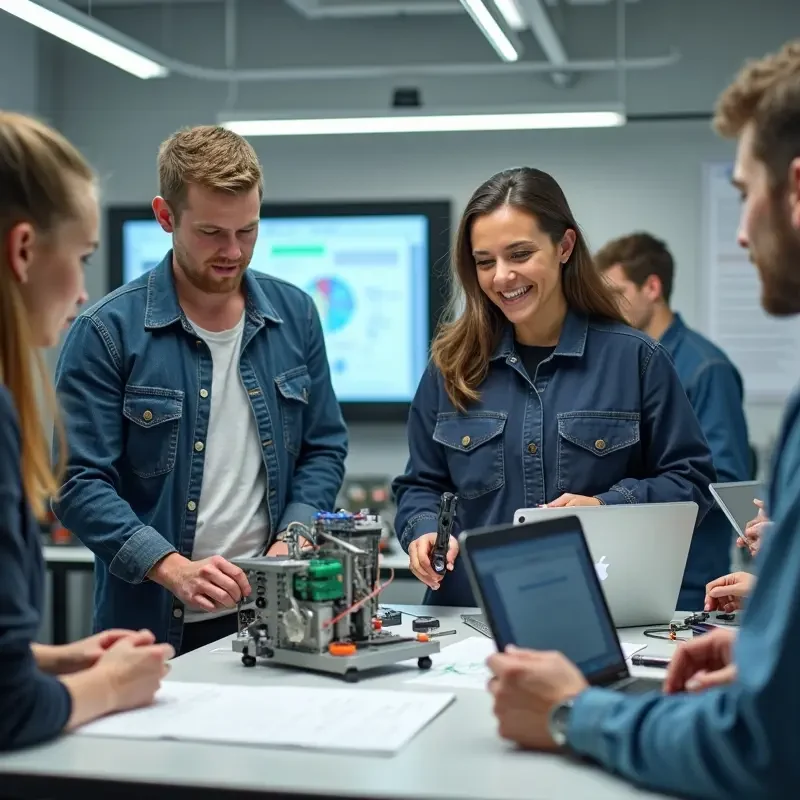The rapid evolution of technology is transforming the landscape of online engineering education, creating expansive opportunities for both students and professionals. From artificial intelligence to immersive virtual experiences, these developments are redefining how engineering concepts are taught and learned in digital spaces.
For instance, tailored academic journeys and hands-on simulations are making it possible for learners worldwide to access state-of-the-art guidance and training through programs like the Masters in Engineering Management Online.
Online engineering education is poised to become more flexible, interactive, and credible than ever before. Students now expect learning solutions that adapt to their unique interests, pace, and career objectives. As the sector continues to evolve, educational institutions, instructors, and learners alike will benefit from emerging tools and strategies that maximize engagement and facilitate the development of real-world skills.
Personalization and technology-driven learning are moving quickly from niche programs to central roles in mainstream educational experiences. The ability to simulate labs, participate in interactive problem-solving, and acquire secure, verifiable credentials is making online pathways increasingly attractive and legitimate for aspiring engineers worldwide.
Technological progress, however, requires the thoughtful integration of pedagogical strategies and resource investments to match it. The way educational providers respond to these changes will have long-term implications for the future workforce and the quality of engineering leadership worldwide.
Artificial Intelligence and Personalized Learning
Artificial Intelligence (AI) is driving significant advancements in online engineering education by enabling the delivery of hyper-personalized content and assessment. Innovative AI-driven platforms monitor student progress, customize assignments, and adjust instructional delivery in real time. As a result, students receive individualized support, focusing on areas where they need the most help and moving quickly through mastered topics.
AI also powers sophisticated tutoring systems, which can analyze students’ patterns of errors or successes, recommending resources or strategies suited to their specific needs. These adaptive technologies support unconventional learners, making engineering concepts more accessible for those who require additional scaffolding or prefer self-directed study.
Virtual and Augmented Reality for Immersive Experiences
Virtual Reality (VR) and Augmented Reality (AR) provide students with immersive, hands-on experiences that are typically only available in traditional laboratories or field settings. Through VR simulations and AR overlays, learners can engage with intricate systems, perform experiments, and visualize engineering challenges in three dimensions, thereby bridging the gap between theory and practice from remote locations.
Such tools lend themselves particularly well to subjects that are difficult to convey using static images or text, such as dynamic structural analyses or fluid mechanics simulations. The accessibility and affordability of these technologies will rapidly expand, opening new opportunities for students who previously lacked access to on-campus resources.
Hybrid and Flexible Learning Models
Hybrid and flexible learning models are enabling students to blend online and in-person engagement as they pursue engineering degrees. Flipped classrooms, collaborative, project-based learning, and synchronous virtual labs draw on the best elements of both traditional and digital pedagogy. Such flexible designs cater to diverse schedules, locations, and learning preferences, ensuring that education remains accessible to a greater population of learners.
The integration of advanced classroom technologies—such as high-definition cameras, conferencing platforms, and interactive whiteboards—facilitates seamless participation and knowledge sharing between remote and in-person students. This collaborative approach to learning is quickly becoming a hallmark of forward-thinking engineering programs.
Gamification and Interactive Learning
Incorporating gamification in online engineering programs is an effective strategy for increasing motivation, engagement, and knowledge retention. Game-like features—such as points, badges, leaderboards, and timed challenges—transform abstract or complex topics into manageable and enjoyable activities. This not only supports deeper understanding but also encourages healthy competition and collaboration among students.
Interactive learning modules continue to evolve in response to emerging trends in educational technology, including real-time simulations and peer-to-peer problem-solving competitions. Various engineering fields are adopting gamified learning strategies to attract and retain diverse student cohorts.
Blockchain for Secure Credentialing
Blockchain technology is poised to transform the way digital credentials are issued, verified, and shared, providing a secure and tamper-resistant solution for academic certification. For online engineering students, this advancement allows their achievements to be encoded into immutable digital certificates, making the transfer of academic credits between institutions faster, more reliable, and virtually fraud-proof.
Employers and educational institutions can instantly verify credentials without relying on manual processes, thereby reducing delays and errors while enhancing trust. The transparency inherent in blockchain ensures that every certificate is authentic and traceable, reinforcing the credibility of online education.
By integrating this technology, learners’ accomplishments gain recognition equivalent to traditional degrees, promoting equity and confidence in digital learning. This innovation ultimately strengthens the ecosystem of higher education, bridging gaps between learners, institutions, and employers through verifiable, secure, and efficient credentialing.
Integration of IoT in Engineering Curricula
The proliferation of Internet of Things (IoT) devices is transforming the content and methods of engineering education. Future-focused programs are incorporating IoT projects and data analytics into their curricula, allowing students to link classroom concepts to real-time hardware and software applications.
Institutions continue to face technical, organizational, and pedagogical challenges in integrating IoT, but ongoing advancements in low-power, scalable IoT platforms are expanding what’s possible for distance learners. Encouraging practical, hands-on engagement with emerging technologies prepares students for the interdisciplinary demands of the modern engineering workforce.
Conclusion
Online engineering education is entering an era of unprecedented innovation, driven by cutting-edge technologies and forward-thinking teaching methodologies. Artificial intelligence enables adaptive learning, tailoring content to individual students’ strengths and weaknesses, while virtual and augmented reality offer immersive, hands-on experiences that replicate real-world engineering challenges.
Gamification motivates engagement, and blockchain ensures secure credentialing and transparent tracking of achievements. Coupled with flexible learning schedules, IoT-integrated coursework, and global collaboration tools, these advancements equip students for the demands of a competitive and interconnected workforce.
As programs become increasingly accessible and maintain rigorous quality standards, they are redefining the benchmarks of higher education. By combining technological sophistication with pedagogical innovation, online engineering education is not merely evolving—it is shaping the future of learning, equipping students with skills, adaptability, and confidence for lifelong success.







